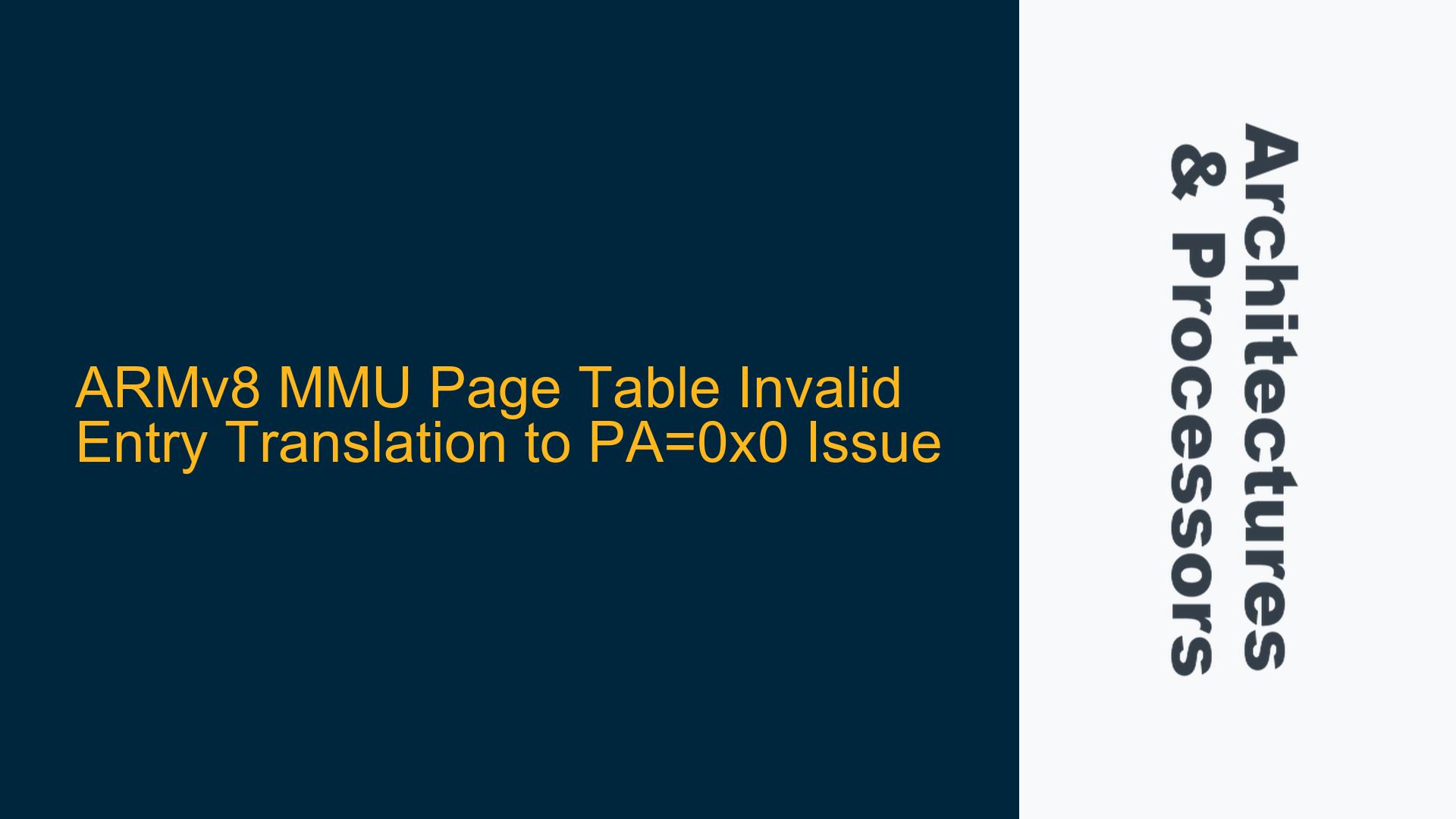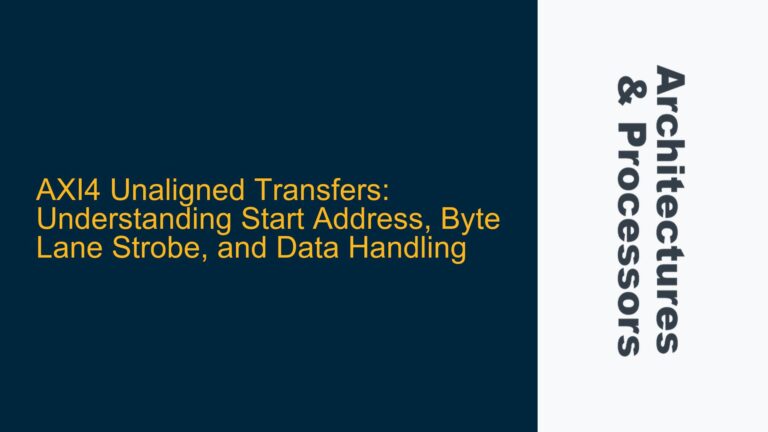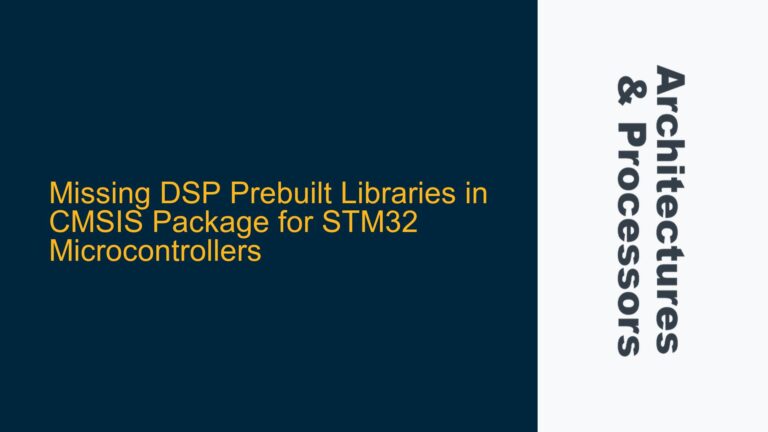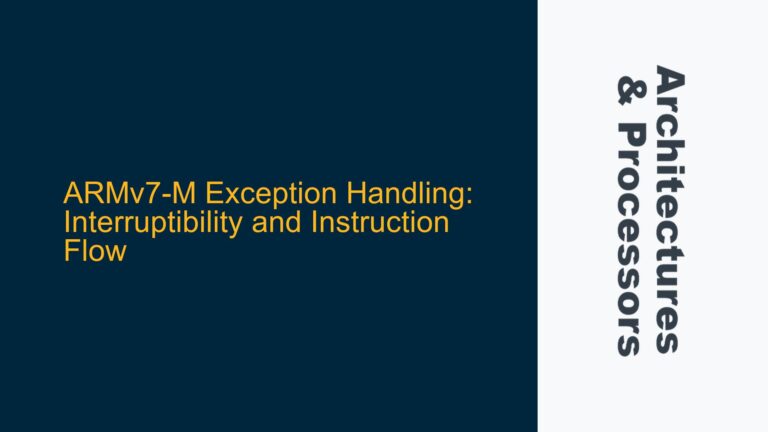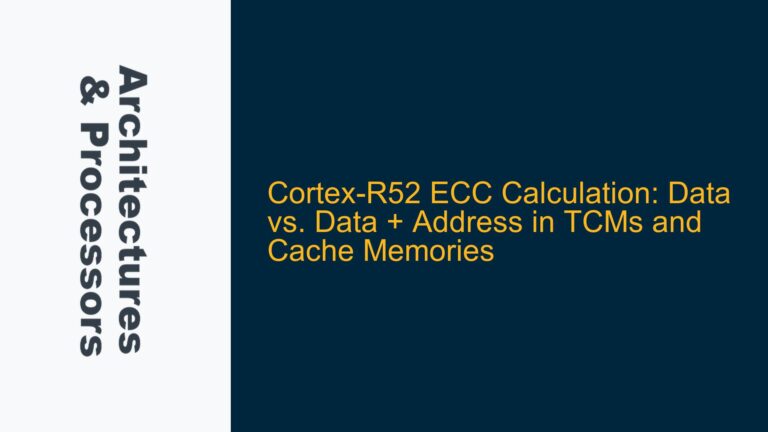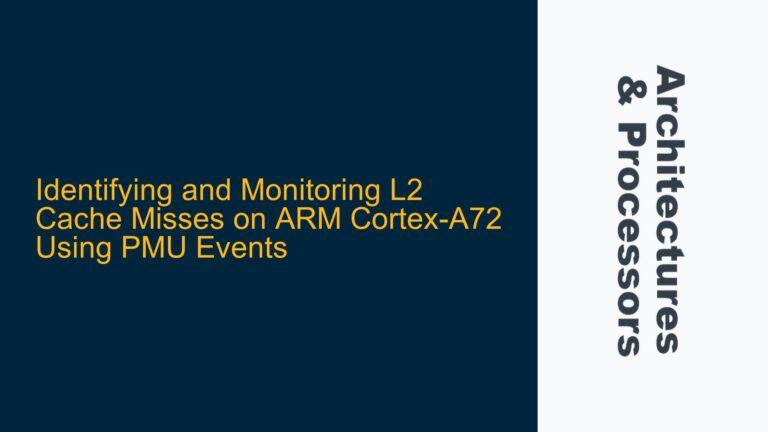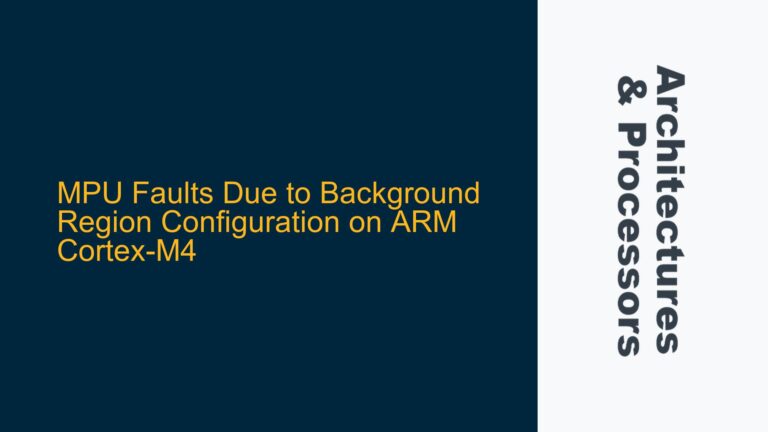ARMv8 MMU Level 2 Table Invalid Entry Behavior with 64KB Granule
In ARMv8 architectures, the Memory Management Unit (MMU) is responsible for translating virtual addresses (VA) to physical addresses (PA) using a multi-level page table structure. When using a 64KB granule size, the MMU employs a three-level page table hierarchy: Level 1, Level 2, and Level 3. Each level of the page table contains descriptors that define the properties of the memory regions they map, including whether the region is valid, accessible, or reserved.
A common issue arises when an invalid entry is encountered in the Level 2 table. Specifically, when an invalid entry descriptor (0x0000000000000002) is placed in the Level 2 table to mark a reserved or inaccessible memory region, the MMU translates the virtual address to a physical address of 0x0 upon a misprediction. This behavior is problematic because the CPU attempts to read from the physical address 0x0, which is typically an invalid or reserved memory location. This can lead to unexpected system behavior, such as crashes or data corruption.
The core of the issue lies in the interpretation of the invalid entry descriptor and its handling by the MMU. The descriptor 0x0000000000000002 is intended to mark an invalid entry, but the MMU does not dismiss the translation as expected. Instead, it proceeds with the translation, resulting in a physical address of 0x0. This behavior is inconsistent with the expected outcome, where the MMU should either generate a translation fault or dismiss the translation entirely.
Misconfiguration of Level 2 Table Descriptors and Granule Size Implications
The root cause of this issue can be traced to the misconfiguration of the Level 2 table descriptors and the implications of using a 64KB granule size. In ARMv8 architectures, the granule size determines the structure and behavior of the page tables. With a 64KB granule, the MMU expects a three-level page table hierarchy, where each level has a specific role in the address translation process.
The Level 2 table, in particular, is responsible for mapping large memory regions, such as 512MB blocks. When an invalid entry is placed in the Level 2 table, the MMU interprets the descriptor based on the granule size and the level of the table. The descriptor 0x0000000000000002 is not appropriate for use in the Level 2 table with a 64KB granule. According to the ARM architecture specifications, this descriptor is reserved and should not be used in Level 3 translation tables. However, its use in Level 2 tables with a 64KB granule leads to unexpected behavior.
The ARM architecture specifies that invalid entries in the page tables should behave identically to encodings with bit[0] set to 0. This means that the MMU should treat the entry as invalid and either generate a translation fault or dismiss the translation. However, the use of the descriptor 0x0000000000000002 in the Level 2 table with a 64KB granule results in the MMU translating the virtual address to 0x0, which is not the expected behavior.
Another contributing factor is the misalignment between the granule size and the page table hierarchy. With a 64KB granule, the MMU expects a three-level page table hierarchy, but the Level 2 table is being used in a way that is inconsistent with this expectation. This misalignment can lead to incorrect interpretation of the descriptors and unexpected translation behavior.
Correcting Invalid Entry Descriptors and Ensuring Proper MMU Behavior
To resolve the issue of invalid entry descriptors causing incorrect address translation, it is necessary to ensure that the descriptors used in the Level 2 table are appropriate for the granule size and the level of the table. The following steps outline the process for correcting the invalid entry descriptors and ensuring proper MMU behavior:
-
Review the Page Table Hierarchy and Granule Size: The first step is to review the page table hierarchy and ensure that it is consistent with the granule size. With a 64KB granule, the MMU expects a three-level page table hierarchy, consisting of Level 1, Level 2, and Level 3 tables. The Level 2 table should be used to map large memory regions, such as 512MB blocks, while the Level 3 table is used for smaller memory regions.
-
Use Appropriate Descriptors for Invalid Entries: The descriptor
0x0000000000000002should not be used in the Level 2 table with a 64KB granule. Instead, the appropriate descriptor for an invalid entry should be used. According to the ARM architecture specifications, invalid entries in the Level 2 table should be marked with a descriptor that has bit[0] set to 0. This ensures that the MMU treats the entry as invalid and either generates a translation fault or dismisses the translation. -
Implement Translation Fault Handling: In cases where an invalid entry is encountered, the MMU should generate a translation fault. This fault can be handled by the operating system or firmware to take appropriate action, such as terminating the process that attempted to access the invalid memory region or mapping the region to a valid physical address.
-
Validate the Page Table Configuration: After making the necessary changes to the descriptors, it is important to validate the page table configuration to ensure that the MMU behaves as expected. This can be done by testing the address translation process with various virtual addresses and verifying that the MMU correctly handles invalid entries.
-
Optimize the Page Table Structure: In addition to correcting the invalid entry descriptors, it is also important to optimize the page table structure to improve performance and reduce memory usage. This can be achieved by using larger memory regions in the Level 2 table and minimizing the number of Level 3 tables.
By following these steps, the issue of invalid entry descriptors causing incorrect address translation can be resolved, ensuring that the MMU behaves as expected and the system operates reliably.
Detailed Analysis of ARMv8 MMU Page Table Descriptors
To further understand the issue, it is necessary to delve into the details of ARMv8 MMU page table descriptors and their interpretation by the MMU. The following table provides an overview of the key bits in a page table descriptor and their significance:
| Bit(s) | Name | Description |
|---|---|---|
| 0 | Valid | Indicates whether the entry is valid (1) or invalid (0). |
| 1 | Table/Block | Indicates whether the entry is a table descriptor (1) or a block descriptor (0). |
| 2 | Memory Attributes | Specifies the memory attributes for the region, such as cacheability and shareability. |
| 3 | Access Permissions | Specifies the access permissions for the region, such as read/write and user/supervisor. |
| 4 | Execute Never | Indicates whether the region is executable (0) or non-executable (1). |
| 5 | Contiguous | Indicates whether the region is part of a contiguous block of memory. |
| 6 | Privileged Execute Never | Indicates whether the region is non-executable in privileged modes. |
| 7 | Reserved | Reserved for future use. |
| 8 | Output Address | Specifies the physical address of the next level table or the block of memory. |
| 9 | Reserved | Reserved for future use. |
| 10 | Reserved | Reserved for future use. |
| 11 | Reserved | Reserved for future use. |
| 12 | Reserved | Reserved for future use. |
| 13 | Reserved | Reserved for future use. |
| 14 | Reserved | Reserved for future use. |
| 15 | Reserved | Reserved for future use. |
In the context of the issue at hand, the key bit is bit[0], which indicates whether the entry is valid or invalid. When bit[0] is set to 0, the entry is considered invalid, and the MMU should either generate a translation fault or dismiss the translation. However, the use of the descriptor 0x0000000000000002 in the Level 2 table with a 64KB granule results in the MMU translating the virtual address to 0x0, which is not the expected behavior.
Conclusion
The issue of invalid entry descriptors causing incorrect address translation in ARMv8 MMU page tables is a complex problem that requires a deep understanding of the ARM architecture and the MMU’s behavior. By reviewing the page table hierarchy, using appropriate descriptors for invalid entries, implementing translation fault handling, validating the page table configuration, and optimizing the page table structure, the issue can be resolved, ensuring that the MMU behaves as expected and the system operates reliably.
This detailed analysis and troubleshooting guide provide a comprehensive approach to addressing the issue, drawing on the expertise of an experienced embedded systems engineer with deep knowledge of ARM architectures and processors. By following the steps outlined in this guide, developers can ensure that their ARMv8-based systems handle invalid memory regions correctly and avoid unexpected behavior.
